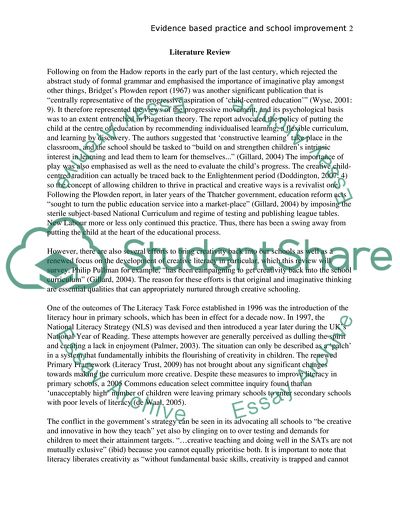Cite this document
(Evidence Based Practice and School Improvement Literature review Example | Topics and Well Written Essays - 1250 words, n.d.)
Evidence Based Practice and School Improvement Literature review Example | Topics and Well Written Essays - 1250 words. https://studentshare.org/education/1724735-evidence-based-practise-and-school-improvement
Evidence Based Practice and School Improvement Literature review Example | Topics and Well Written Essays - 1250 words. https://studentshare.org/education/1724735-evidence-based-practise-and-school-improvement
(Evidence Based Practice and School Improvement Literature Review Example | Topics and Well Written Essays - 1250 Words)
Evidence Based Practice and School Improvement Literature Review Example | Topics and Well Written Essays - 1250 Words. https://studentshare.org/education/1724735-evidence-based-practise-and-school-improvement.
Evidence Based Practice and School Improvement Literature Review Example | Topics and Well Written Essays - 1250 Words. https://studentshare.org/education/1724735-evidence-based-practise-and-school-improvement.
“Evidence Based Practice and School Improvement Literature Review Example | Topics and Well Written Essays - 1250 Words”. https://studentshare.org/education/1724735-evidence-based-practise-and-school-improvement.


